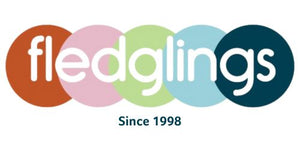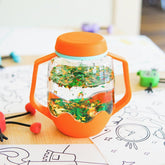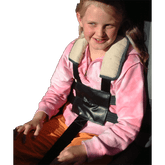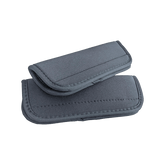New Term, Calm Start: Back-to-School Support for Children with Additional Needs
Starting a new school year can be exciting — and overwhelming. New rooms, new teachers, new routines. For children with additional needs, that change can feel especially big. At Fledglings, we focus on practical tools that make transitions clearer and calmer for children, and simpler for families.
👉 Download the free Fledglings Start of Term Toolkit (Visual routines + Back-to-School checklist).
Download the ToolkitWhat makes transitions hard — and how to help
- Predictability lowers anxiety. Use visual routines to show what’s happening now and next.
- Familiarity builds confidence. Rehearse key parts of the day (bag-packing, route to school, lunch routine).
- Choice restores control. Offer small, structured choices (snack A or B; walk or scooter).
- Co-regulation first. Your calm presence + planned sensory breaks can prevent overwhelm.
If anxiety is already high, YoungMinds has a clear guide for school anxiety and refusal, including how to work with school and services.
Free, printable help from Fledglings (download & go)
To make preparation easier, we’ve created Fledglings-exclusive printables you can use today:
- Visual Routine Schedules (morning / afternoon / evening).
- Back-to-School Checklist
- How am I Feeling Poster
- Route to School Plan
Print two sets: one for the fridge, one for the school bag — laminate if possible so you can tick and wipe.
These are free to download, but please not that these have been created as products so you will need to add to basket and go through checkout. If you are able to support us with any donation that woudl be appreciated, but not a requirement to access these resources.
Download in one go:
👉 Download the free Fledglings Start of Term Toolkit (Visual routines + Back-to-School checklist).
Download the ToolkitWeek-by-week: a gentle ramp into term
2–3 weeks before
- Walk or drive past school; mark the route on the School Map.
- Start the morning routine daily; keep steps short and consistent.
- Create a 10–15 minute “practice school time.”
1 week before
- Pre-wash or layer uniform if textures are tricky.
- Practise drop-off with a simple goodbye routine.
Night before
- Pack together with the checklist.
- Preview tomorrow with the visual schedule.
First week back
- Keep afternoons light.
- Use the How I am Feeling Poster daily.
Working with school: short scripts & supports
If something isn’t working, Contact can help you plan next steps and speak with school confidently.
Try this short email (adapt as needed):
Subject: Support plan for [Child’s Name] — first weeks back
Hi [Teacher/SENCO],
We’re using a simple visual routine and calm breaks at home. Could we agree similar supports in class (e.g. a 5-minute movement break before literacy; a quiet “check-in” after lunch)? I’ve attached a one-page profile with triggers and helpful strategies.
Many thanks,
[Your name]
For additional practical tips on transitions and SEND, Family Action shares back-to-school guidance for parents.
Quick wins that make a big difference
- Visuals everywhere: door, fridge, bag tag, locker.
- Sensory breaks before they’re needed.
- Predictable language: the same short cue each day.
- A “just-in-case” pouch with essentials.
If travel is part of the challenge, Contact also outlines ways to get advice on school transport and related support.
When things feel hard
Reach out early:
- Contact Helpline (0808 808 3555; Mon–Fri).
- YoungMinds — guidance for school anxiety.
You’re not alone, and small adjustments add up.
Products to consider that may help
👉 Download the free Fledglings Start of Term Toolkit.
Download the ToolkitTop 5 Portable Sensory Strategies
-
Noise reduction with Ear Defenders or Headphones
Why it helps: Reduces auditory overwhelm.
Evidence: Recommended by occupational therapists. -
Proprioceptive input via Portable Deep-Pressure Tools
Why it helps: Calming effect and improved focus.
Evidence: Weighted items ease anxiety. -
Fidget Toy or Tactile Object
Why it helps: Focused tactile input aids self-regulation.
Evidence: Widely used as low-tech sensory support. -
Simple Visual Timer or Break Card
Why it helps: Helps children understand time passing.
Evidence: Effective for decreasing anxiety. -
Structured Movement Break Tool
Why it helps: Promotes regulation and attention.
Evidence: Supports focus and behavior regulation.
Top 5 Sensory Strategies for a Calm Transition
Sensory regulation plays a huge role in helping children feel safe and ready to learn.
-
Deep Pressure Tools
Weighted lap pads, fidget bands, or toys. -
Movement Breaks
Chair push-ups, wall presses, wobble cushion/seat. -
Fidget and Tactile Tools
Chewable jewellery, stress balls, textured fidgets. -
Sound Management
Ear defenders or ear-plugs. -
Calm Corners and Comfort Kits
Small kit: toy, cue cards, weighted item.
Every Child Deserves a Calm Start
No two children are the same — but with the right tools and strategies, the return to school can feel far less daunting.
👉 Explore our full range of Back to School essentials and Classroom Aids.
And remember, you’re not alone. If you’d like free advice and emotional support, our charity partner Contact is here to help families of children with additional needs.
References & Further Reading
- National Autistic Society — Sensory differences explained.
- The OT Toolbox — Calming sensory strategies for school.
- Sensory Integration Education — The power of proprioception.
- Contact — Support for families.







